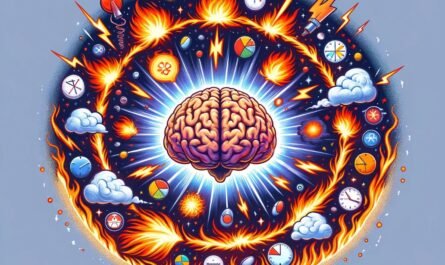Emotional triggers are events, thoughts, and responses that can send us into a mood episode, make us feel anxious, or cause us to avoid and push away. Many mental health guides online tell you to deal with your triggers and to be mindful of them, but there are far fewer guides about figuring out what your triggers are.
Many people have created ingrained habits around their triggers and the responses are automatic. This guide is aimed at helping you discover your triggers so that you can better manage them. As a warning, this might be uncomfortable because you are thinking about events and emotions that make you uncomfortable. It’s OK if you’re not ready. It’s better to admit that than hurt yourself.
As always, it’s best if a counselor is involved. They can also help pinpoint your emotional triggers.
What are Emotional Triggers?
Let’s start here so that you know what you’re looking for. An emotional trigger is any thought or event that makes you uncomfortable. Now “uncomfortable” might sound mild, and it might be in your case. However, this can range from uncomfortable to catastrophically upset depending on your experience.
Behind the trigger is usually a raw, painful thought. It might remind you of something terrible that happened before, or it might hit a sore spot (I’m not good enough, I’ll never have the life I want, why does this happen to me?, etc). Just like with your physical body, poking a sore spot doesn’t make it better. It irritates it and might lead to infection.
However, unlike a sore spot on your body that is typically an angry red, understanding your triggers can be a little trickier. That’s OK, there are some ways to raise your awareness of your triggers.
Trigger Journal
One of the best ways to understand any feeling, be it a trigger or anything else, is to journal it. This allows you to evaluate your feelings and to see any patterns that emerge. In this case you’ll make three columns:
- Triggering Event
- Emotion
- Response to Trigger
The “Triggering Event” column is the event itself. What made you feel triggered and uncomfortable? Remember, this journal is just for you, so write down the event exactly how it happened (don’t sugarcoat it, be true about what happened).
Next is your emotion. What emotion(s) did the trigger elicit? Many people have a hard time identifying emotions because emotional words aren’t used that often in everyday conversation. That’s OK. You don’t have to be too colorful. Here are the six basic emotions:
- Happiness
- Sadness
- Fear
- Disgust
- Surprise
- Anger
Write any emotion that came up from the trigger. There might be more than one. There might be all six (while “happiness” might not be a common occurrence here, don’t exclude it if it comes up).
Lastly is the response. What did you do after the triggering event and feeling the emotions? Again, this journal is just for you, so be honest. You may have cried, felt upset all day, engaged in substances, or even hurt yourself. Be honest about your response. This can help you determine how much the trigger affects your mental health.
Ongoing Project
It’s best to start this with one or two memories about recent events that triggered you. However, this should be an ongoing project that you work on whenever you feel triggered. You don’t have to do it right after the trigger (let yourself relax and heal first), but add to the list as the events happen.
The more you add, the better you can determine your triggers.
Look for Patterns
As your list grows you might notice certain patterns emerging. Maybe you feel triggered most often around family, during work meetings, when streaming certain movies or videos, or when you’re around a particular friend.
Take notice of these patterns because that will help you determine what your trigger is.
Making Boundaries
Now that you understand your triggers, what should you do about them? Should you run wildly away from them in fear? Should you isolate them from your world and condemn their existence? No, those reactions are too extreme.
It’s better instead to just avoid them. Don’t consume media that triggers you. Avoid situations where your triggers might be brought up (or where they might be front and center). Simply understand that the emotional toll isn’t worth it and don’t engage with your triggers.
This is called making boundaries. Boundaries exist to help your mental health. It’s saying that you will keep the triggering content out of your life (whenever possible) because it’s not worth the emotional pain it brings up.
Unavoidable Triggers
Some triggers are unavoidable. Especially if they come up frequently at work, family gatherings, social events, or are common themes in media. All hope is not lost, this can just feel like an uphill battle sometimes.
As above, use boundaries when possible. When you can’t, then try to talk to the person and let them know that what they are bringing up bothers you. Sometimes a minor confrontation now can avoid significant mental strain later. I know this isn’t always an option, but if you’re comfortable speaking with the other person I highly suggest trying this.
Practice self-care and keep your mind and body as calm as you can. Don’t stay around longer than you have to (that might mean leaving meetings or family functions early), give yourself time to have your feelings, cope with the discomfort, and do something uplifting.
It’s not always easy, but it can be manageable.
Final Thoughts
Figuring out your emotional triggers can be very empowering. Not only will you know more about yourself, but you’ll know what bothers you, why it harms you, and that it’s something to prevent in order to bolster your mental health. Let me know how this goes for you and let me know if you have any other strategies for figuring this out.

